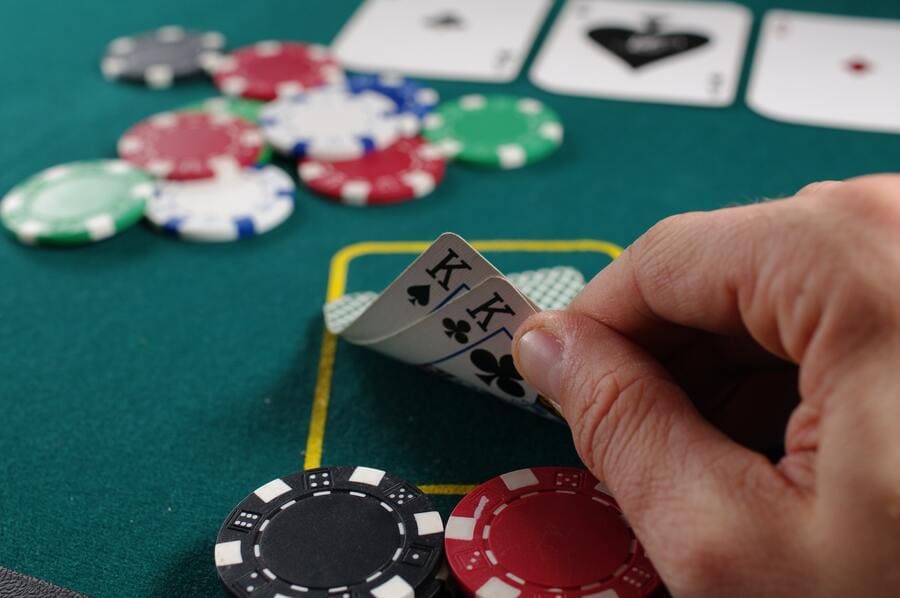Heads Up Poker Strategy

A heads up poker strategy can make a huge difference to your results. Whether you’re playing a low stakes game, or a high stakes tournament, you can use this strategy to win more often.
Aggressive play
Heads up poker is a game of strategy. Players must know the right hand to play, the proper strategy to employ, and be able to keep a clear head in fast paced action. Fortunately, there are some key strategies that can help you improve your skills.
The first thing you need to do is identify what type of hands you have and what types of players you are playing against. In a full table, you will likely be dealing with a variety of opponents. This can make identifying the right strategy for you more difficult.
The most effective heads up poker strategy is to learn the proper time to bet and raise. The best time to bet is preflop. However, you should avoid overdoing it. Overdoing it can result in more calls from the big blind. You also want to avoid overdoing it on the flop.
Postflop play is just as important as your position. A good mix of floats, c-bets, and raises can help you make the most of your poker session.
Preflop play
If you’re playing heads up poker, you’ll have a different approach to preflop play than you’d at a full-ring table. However, the strategy you apply pre-flop can have a big effect on how you play the post-flop portion of the hand.
Heads up players can often be tempted to make aggressive play a norm. This is not a good idea, though. It can result in a false sense of security and a larger pot than you might otherwise get.
Aggressive play involves knowing how your opponent plays and being able to exploit it. In addition, you must avoid becoming too married to your hand.
If you’re the button, it’s important to keep an open mind and act as if you’re playing your best game. You need to be a lot more aggressive and selective than you’d be at a regular table.
The ace is one of the most important cards in poker. When you have an ace, you’re 52% or better to win against any random hand. Whether you’re betting, raising or checking, you’ll want to use your ace to beat your opponent’s hand.
Bluffing
Bluffing is one of the most important components of heads up poker. It requires the ability to read your opponent, and to act as if you possess a specific hand.
It is important to bluff sparingly. You don’t want to overdo it and make your opponent fold. This is especially true if you are playing for a high stakes pot. If you bluff too often, you’ll lose your stack. However, you can increase your odds of winning a hand by bluffing with the right amount of bluffs.
There are many bluffing strategies, and they are all worth looking into. Bluffing with a backup plan is one of them. While this strategy will lead to a loss initially, it will give you the opportunity to fold the best hand you can.
One of the most important things to consider when bluffing is how much you are willing to bet. While some players will bet a lot to get their opponents to fold, others will be conservative to avoid making costly mistakes. Also, you’ll want to consider how much you would bet if you were holding a value hand.
Using the Nash Equilibrium
When playing heads up poker, you have to be aware of your opponents’ strategy. If you know what your opponent is doing, you can play more aggressively. This will help increase your long-term results. You also have to keep in mind your own strategy.
Nash equilibrium is a mathematical theory that helps you decide what to do in a non-cooperative game. It is used in poker, economics, and social sciences.
The theory of Nash explains how people would not deviate from their original course of action if they knew what their opponent was doing. As a result, two players with perfect preflop strategies are in a Nash equilibrium.
The optimal strategy for a poker player is to use the Nash range to push or fold. Using the range will limit your opponent’s edge. However, it will not be the best EV strategy in every situation.
In a heads up poker scenario, players should be aware that their average hands are weaker. They must also be prepared to play more hands. Ideally, you should have a stack of at least 15 big blinds to ensure you have the flexibility to play aggressively.